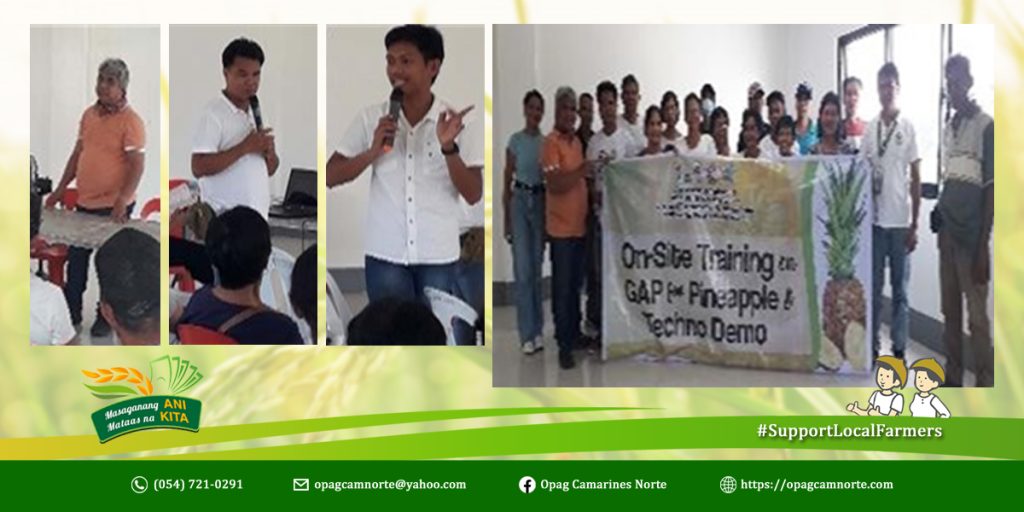San Vicente, Camarines Norte – A three-day on-site training on Good Agricultural Practices (GAP) for Pineapple Production and Technology Demonstration was successfully held from July 29 to 31, 2024, at the Senior Citizen Building. The training welcomed 30 participants, including 12 women and 18 men, all eager to enhance their farming knowledge and skills.
Day 1: Understanding Good Agricultural Practices
The training began with an in-depth discussion of the four key pillars of Good Agricultural Practices (GAP):
- Environmental Safety – Encouraging sustainable farming techniques to preserve natural resources.
- Food Safety: Implementing safety measures to ensure consumers receive healthy, high-quality produce.
- Produce Quality – Applying proper handling practices to maintain top-tier yields.
- Workers’ Health and Safety – Prioritizing the well-being and protection of farm laborers.
Day 2: Pest and Disease Control, Post-Harvest Handling, and Traceability
Agriculturist II, Mr. Ronie Asis, led an insightful discussion on common pineapple pests and diseases. He focused on heart rot disease, which is particularly prevalent during the first quarter of the year in silt clay soil. He also addressed pineapple wilt, commonly found in sandy loam soil, which is caused by mealybugs or aphids, with ants serving as carriers due to their symbiotic relationship.
Following this, Agriculturist II, Mr. Ador Sanchez, conducted a session on post-harvest handling, stressing the importance of proper traceability and recall systems. He emphasized maintaining accurate farm records, particularly in monitoring chemical applications, to ensure compliance with food safety standards.
Day 3: Essential Pineapple Production Techniques and Documentation
The final day focused on the best practices for successful pineapple production, covering essential aspects such as:
- Site Selection – Choosing locations with an ideal elevation of 18-35%, at least 50 meters away from poultry and pig farms, and secured with a perimeter fence.
- Planting Techniques – Implementing a double-row planting method, targeting a plant density of 45,000 per hectare.
- Flower Induction – Applying ethylene (not for fruit ripening) to maintain fruit quality and ensure uniform flowering.
- Fertilization – Properly applying fertilizer at the base of the plant and covering it with soil to minimize nutrient loss. Soil analysis before planting is recommended to determine precise fertilizer needs.
- Harvesting: Applying flower inducers once the plant has at least 36 functional leaves, ideally in the early morning or late afternoon when stomata are closed. Pineapples are ready for green-ripe harvest approximately four months after flower induction.
Additionally, participants received guidance on completing essential farm documents, including the Letter of Intent, Kasunduan, Farm Plan and Budget, and GAP Application Form.
This training provided farmers with valuable knowledge and practical skills to enhance their productivity, efficiency, and adherence to GAP standards in pineapple farming. By equipping local farmers with these best practices, the province continues to strengthen its agricultural sector, ensuring a sustainable and high-quality pineapple industry.
Share via:

